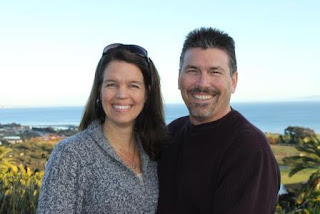Crafting a Congregational Narrative, part 2
This narrative project finds resonance in the writing of many church consultants and church renewal experts. A number of leading individuals write about the need for something similar to our project here at the College Church. Here's a sampling:
Robert Dale speaks about tapping into the “theological roots” of a congregation in order to restore the church’s dream for the future (To Dream Again: How to Help Your Church Come Alive, Nashville: Broadman, 1981).
James Hopewell writes that “narrative can be a means by which a congregation apprehends its vocation” (Congregations: Stories and Structures, Philadelphia: Fortress Press, 1987).
Diana Butler Bass builds on Hopewell’s work by stating that congregations can embody the stories they tell (The Practicing Congregation: Imagining a New Old Church, Herndon, VA: Alban Institute, 2004).
Gil Rendle discusses the need to move a congregation out of the safe, weak stories in which many are allowed to operate. The goal is to move from shared monologue to shared dialogue out of which a new story emerges (“Narrative Leadership and Renewed Congregational Identity,” in Finding Our Story: Narrative Leadership and Congregational Change, ed. Larry A Goleman, Herndon, VA: Alban Institute, 2010).
George Hunsberger writes about a congregation’s need to discern its “missional vocation,” a calling that is unique to each particular church in its context. The process he describes has some similarities to the task of forming a congregational narrative (“Discerning Missional Vocation,” in Treasure in Clay Jars: Patterns in Missional Faithfulness, ed. Lois Y. Barrett, 33-58, Grand Rapids: Eerdmans, 2004).
George Bullard describes the need to write a congregation’s “future story” based on what God has done in the past and what a church’s leaders perceive about their future (Pursuing the Full Kingdom Potential of Your Congregation, St. Louis: Chalice Press, 2005).
Mary Clark Moschella describes this intervention’s process as a way of “co-authoring the future” and subsequently finding new ways for a congregation to think and act together (Ethnography as a Pastoral Practice: An Introduction, Cleveland: The Pilgrim Press, 2008).
Robert Dale speaks about tapping into the “theological roots” of a congregation in order to restore the church’s dream for the future (To Dream Again: How to Help Your Church Come Alive, Nashville: Broadman, 1981).
James Hopewell writes that “narrative can be a means by which a congregation apprehends its vocation” (Congregations: Stories and Structures, Philadelphia: Fortress Press, 1987).
Diana Butler Bass builds on Hopewell’s work by stating that congregations can embody the stories they tell (The Practicing Congregation: Imagining a New Old Church, Herndon, VA: Alban Institute, 2004).
Gil Rendle discusses the need to move a congregation out of the safe, weak stories in which many are allowed to operate. The goal is to move from shared monologue to shared dialogue out of which a new story emerges (“Narrative Leadership and Renewed Congregational Identity,” in Finding Our Story: Narrative Leadership and Congregational Change, ed. Larry A Goleman, Herndon, VA: Alban Institute, 2010).
George Hunsberger writes about a congregation’s need to discern its “missional vocation,” a calling that is unique to each particular church in its context. The process he describes has some similarities to the task of forming a congregational narrative (“Discerning Missional Vocation,” in Treasure in Clay Jars: Patterns in Missional Faithfulness, ed. Lois Y. Barrett, 33-58, Grand Rapids: Eerdmans, 2004).
George Bullard describes the need to write a congregation’s “future story” based on what God has done in the past and what a church’s leaders perceive about their future (Pursuing the Full Kingdom Potential of Your Congregation, St. Louis: Chalice Press, 2005).
Mary Clark Moschella describes this intervention’s process as a way of “co-authoring the future” and subsequently finding new ways for a congregation to think and act together (Ethnography as a Pastoral Practice: An Introduction, Cleveland: The Pilgrim Press, 2008).



Comments